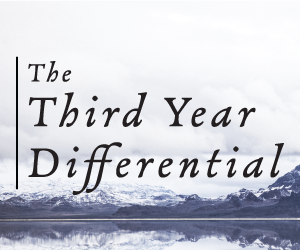Central to the skillset of every physician is the differential diagnosis. This is a list of possible diagnoses that helps guide clinical decision-making. By asking specific questions, performing a focused physical exam, and ordering lab tests, all through the lens of the differential, physicians are able to rule in or rule out each item on the list. The differential is not fixed, however; it is a fluid list that can be rearranged or completely changed at any time given new information. This information often comes in the form of an extra piece of history from the patient, a new finding from an imaging study, or frequently, from several lab tests coming back negative.
In many ways, the first clinical year of medical school (traditionally the third year) is like a differential for each student, except instead of diagnoses, the list in question consists of medical specialties. All the possible fields a student can choose to specialize in – family medicine, surgery, ophthalmology, and the rest – are on a list of options in the mind of each student. Students begin the clinical years with different lists, some more established than others. Some might have strong feelings about a certain specialty, and the third year is a chance to finally confirm it in the clinic. Others are less firmly committed; they might have inclinations towards or away from certain specialties, but are generally unsure of what they want to pursue.
Third year students rotate through just about everything. Although it is important for medical students to learn how to be doctors–much of the nuts-and-bolts training happens during residency–third year is a chance to see and do everything. This ideally creates well-rounded, broadly knowledgeable physicians regardless of specialty. Further, spending each day in the clinic allows the students to determine what really should go at the top of their ‘differential’; in other words, which specialty they will choose.
Just like the typical differential diagnosis, the student’s specialty differential is dynamic. Certain options might be crossed off quickly, as a student rotates through a specialty that does not connect with them at all. For many, previously unexplored options are added after a particularly good experience. Elective rotations early in fourth year help solidify a top choice or decide between two options; and occassionaly, students will apply in more than one specialty, using most of fourth year and the interview process itself to make the decision. And of course, some doctors end up changing their minds and doing a fellowship or completely different residency later in their careers.
The process is different for each aspiring physician, because each student has different predilections, skills, and personality, combined with varying exposure to each option. This column will explore this “Third Year Differential” through the lens of one third-year student. Of course, third year is about much more than choosing a specialty, but confidently deciding involves looking closely at each rotation. Consequently, this column will examine the full experience of learning clinical medicine; articles will feature snapshots of each specialty, interesting and noteworthy experiences, profound moments of learning, and advice for succeeding in different specialties and, more generally, in the clinical years of medical school.
Look for Brent’s regular column, Third Year Differential, the 4th Monday of every month.
About the Author
Brent Schnipke is a third year medical student at Wright State University Boonshoft School of Medicine in Beavercreek, OH. He is a graduate of Mount Vernon Nazarene University with a degree in Biology. His interests include medical education, writing, medical humanities, and bioethics. Brent is also active on social media and can be reached on Twitter @brentschnipke.
Column Intro: The Third Year Differential
